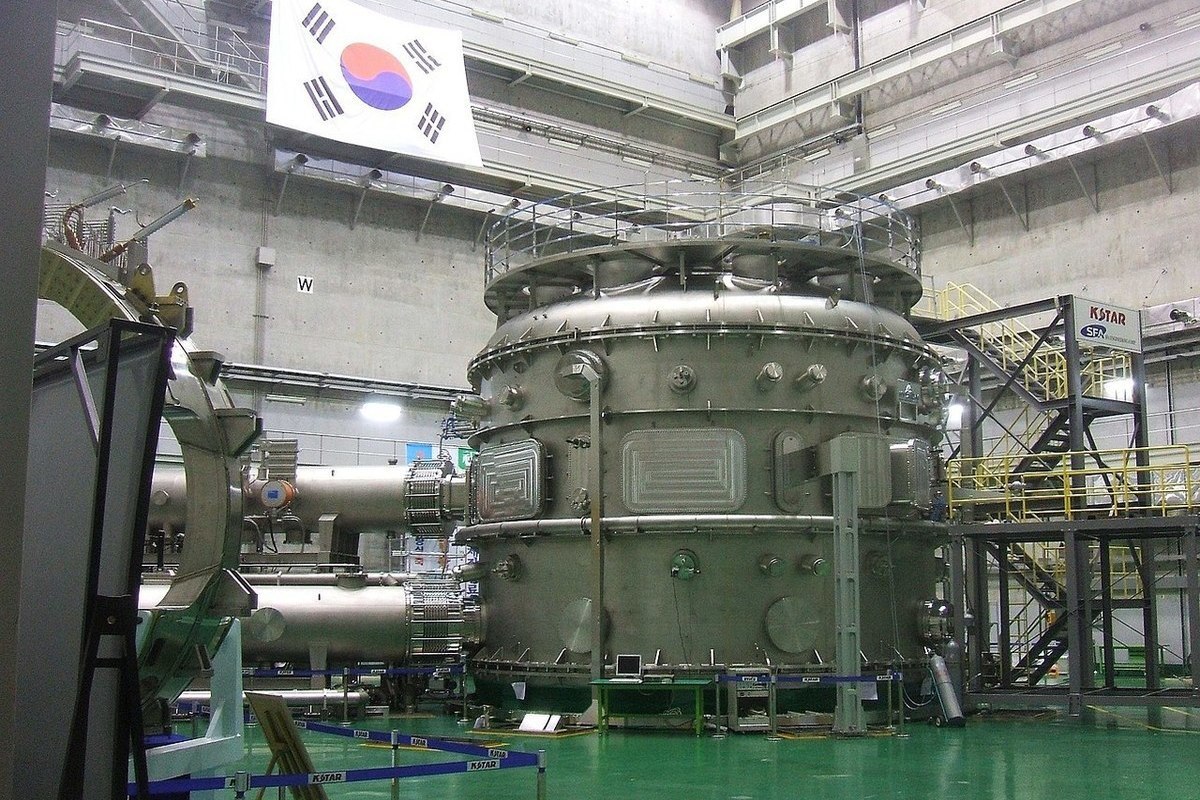The “artificial sun” created by scientists helped make a breakthrough in the field of nuclear fusion
[ad_1]

Scientists in South Korea have announced a new world record for maintaining temperatures of 100 million degrees Celsius – seven times the temperature of the sun’s core – during a nuclear fusion experiment, which they say is a major step forward in the development of this futuristic energy technology. technologies.
Nuclear fusion aims to replicate the reaction that makes the sun and other stars shine by fusing two atoms to release enormous amounts of energy, CNN explains. Often called the holy grail of clean energy for solving climate problems, nuclear fusion has the potential to produce unlimited amounts of energy without polluting the planet with carbon dioxide. But mastering this process on Earth is extremely difficult.
The most common way to produce fusion energy is through a donut-shaped reactor called a tokamak, in which hydrogen is heated to unusually high temperatures to create plasma.
Plasma of high temperature and density, in which reactions can proceed for long periods of time, is vital to the future of fusion reactors, says Si-Woo Yoon, director of the KSTAR research center at the Korea Institute of Fusion Energy (KFE), which set the new record.
Maintaining such high temperatures “has not been easy to demonstrate due to the unstable nature of high-temperature plasma,” the scientist told CNN, which is why this recent record is so important.
KSTAR, KFE’s fusion research device that the company calls an “artificial sun,” managed to maintain a plasma temperature of 100 million degrees for 48 seconds during tests between December 2023 and February 2024, breaking the previous record of 30 seconds set in 2021 year.
KFE scientists said they were able to extend that time by improving the process, including using tungsten instead of carbon in “dissipation elements” that remove heat and impurities produced by the fusion reaction.
The ultimate goal is for KSTAR to be able to maintain a plasma temperature of 100 million degrees for 300 seconds by 2026, which is a “critical point” for scaling up fusion, notes Si-Woo Yun.
What scientists in South Korea are doing will form the basis for the development of an international experimental fusion reactor in southern France known as ITER, the world’s largest tokamak, which aims to prove the possibility of nuclear fusion.
KSTAR’s work “will be of great help in ensuring ITER’s operational performance forecasts are on schedule and in promoting the commercialization of fusion energy,” said Si-Woo Yun.
The announcement joins a number of other advances in nuclear fusion, CNN reported.
In 2022, scientists at the Lawrence Livermore National Laboratory National Ignition Facility in the United States made history by successfully completing a nuclear fusion reaction that produced more energy than was used to conduct the experiment.
In February of this year, scientists near the English city of Oxford announced that they had set a record for producing more energy in a thermonuclear reaction than ever before. They produced 69 megajoules of fusion energy in five seconds, roughly enough to power 12,000 homes in the same amount of time.
But the commercialization of thermonuclear fusion is still a long way off as scientists work to solve diabolical engineering and scientific problems, CNN emphasizes.
Nuclear fusion “isn’t ready yet and so it can’t help us tackle the climate crisis now,” said Anika Khan, a nuclear fusion research fellow at the University of Manchester in the UK.
However, she added, if progress continues, fusion “could potentially become part of the green energy landscape in the second half of the century.”
[ad_2]
Source link








